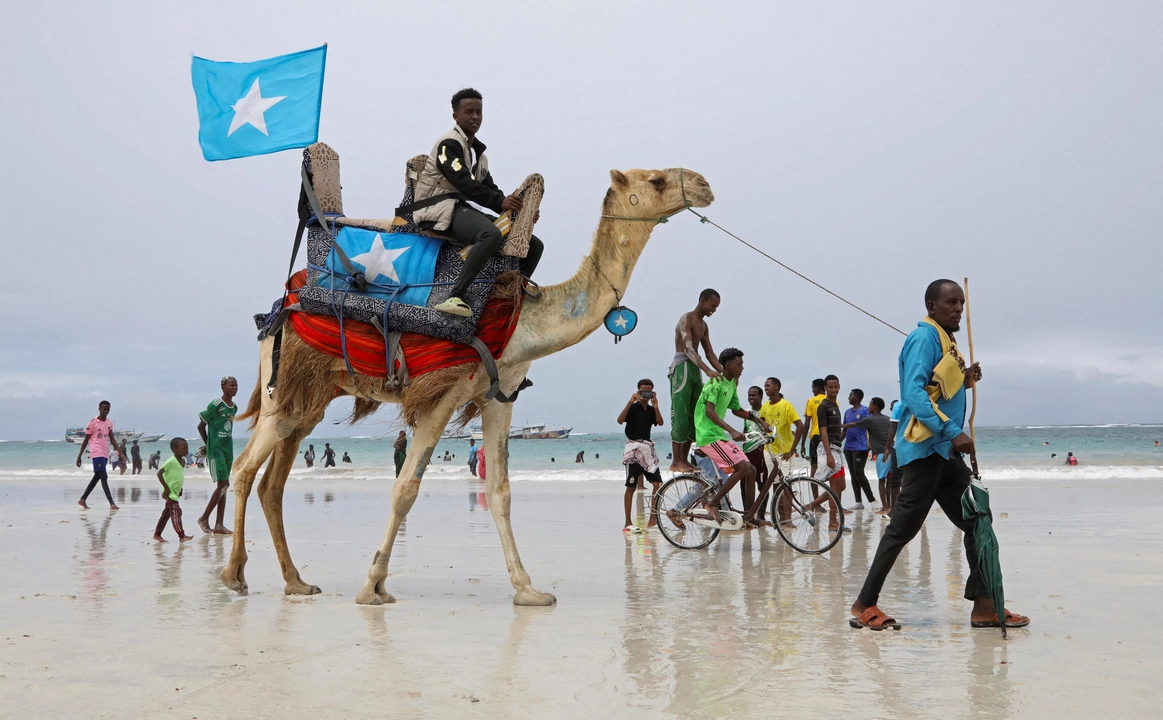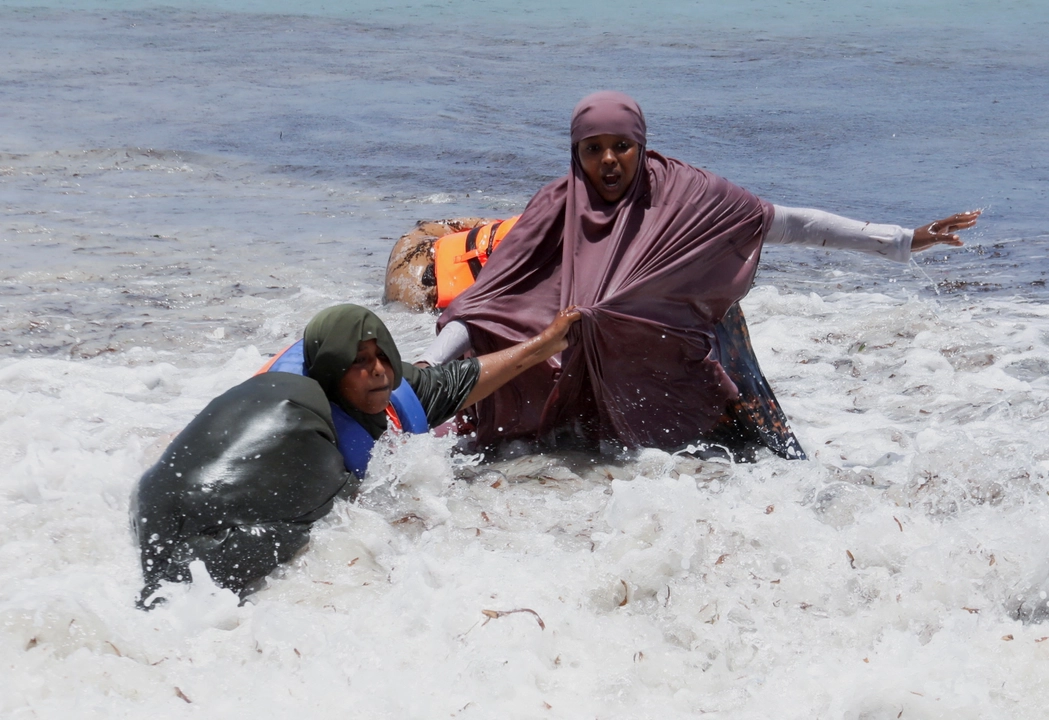Sport
Dollar
38,2552
0.34 %Euro
43,8333
0.15 %Gram Gold
4.076,2000
0.31 %Quarter Gold
6.772,5700
0.78 %Silver
39,9100
0.36 %Somalia's revival as a tourism destination marks a journey from conflict to reclaiming its lost identity as a country blessed with natural wealth, cultural richness, and a resilient population.
By Nuri Aden
It's a sunny Friday afternoon, and Liido Beach in the Somali capital of Mogadishu is buzzing.
The turquoise waters of the Indian Ocean gently lap the shore as visitors swim, laze around or play on the golden sands. The medley of sights and sounds makes for a classic beach vibe that is at once inviting.
Gone are the days when foreign faces on Liido Beach would draw wary glances from the locals. Now, barely anyone pauses at the sight of visitors from Europe, Asia, and the Middle East thronging this happening area of town.
Liido represents what Somalia seeks to be – a nation that has put its past behind it to reclaim its rightful place on the global map.
Chequered history
For decades, Somalia was defined by internal turmoil and how the world perceived it.
Foreign visitors to the country were limited to African Union peacekeepers, diplomats, aid workers, expatriate professionals, and United Nations personnel.
It hardly mattered how anyone from outside wished to experience Somalia; security requirements and restricted movement overshadowed that.

This East African country of stunning beaches, historical landmarks, bustling markets, and rich cuisine and culture has since rebuilt its image as a tourism destination that should be on every traveller’s bucket list.
Each month now sees dozens of international travellers booking trips online and freely exploring Somalia’s many splendours.
It’s not just about reviving tourism but also a reconnection, healing of wounds, and enabling the world to see Somalia from a new perspective.
Monica, a seasoned international traveller, recounts her discovery of Somalia as one full of surprises.
“Somalia is filled with beautiful places, steeped in history and embellished with natural wonders. The locals welcomed us warmly, always smiling. The tour was genuinely amazing,” she tells TRT Afrika.
Another visitor recalls his private two-day trip as being an appetiser for more.
“My guide, Ahmed, was superb—smooth airport connections and rich, authentic experiences through markets, historic mosques, and a beautiful and expansive coastline,” he says.
Changing narrative
Once upon a time, Somalia’s tourism star shone brightly.
From the 1960s to the 70s, Mogadishu lived up to the epithet “Pearl of the Indian Ocean”, charming global travellers.

Bustling port towns, bountiful wildlife parks with varied flora and fauna, and pristine beaches drew visitors seeking adventure and authenticity.
Civil unrest cast a shadow over this legacy, shuttering hotels, silencing markets, and obscuring the country’s natural wonders.
It wasn’t until late 2017 that Somalia hit the comeback trail, joining the United Nations World Tourism Organisation as its 157th member.
By 2019, Somalia’s ministry of information, culture, and tourism launched the ambitious National Tourism Policy with a vision to be the destination of choice for travellers worldwide by 2030.
This is no idle dream. Security is steadily improving, investor-friendly policies are reshaping the landscape, and members of the Somali diaspora are returning to their roots, bringing much-needed capital, innovation and hope.
"Somalia is demonstrating its readiness for global tourism through strategic investments in infrastructure, aggressive promotion of its stunning coastline, and dedicated capacity-building efforts,” Daud Aweis, the country’s minister of information, culture and tourism, tells TRT Afrika.
“We are reshaping the narrative and showcasing our country’s untapped potential and remarkable resilience.”
Diverse attractions
Somalia’s 637,000 sq km topography encompasses extraordinary biodiversity – from Sanaag’s mist-shrouded forests to acacia-studded savannas and spectacular marine ecosystems.
Sanctuaries like the Daallo Forest and the Gacan-Libaax National Park have rare treasures such as the Somali wild ass and the Dibatag antelope.
Lag Badana, one of several regions promoting eco-tourism, is worthy of a million Instagram reels. Sa’ad ad-Din island is another fascinating destination beckoning adventurers to explore its coral reefs and untouched white sands.
Somalia’s cultural heritage is just as wondrous. The mysterious cave paintings of Laas Geel, nearly 7,000 years old, offer glimpses into human evolution.

Historic port towns like Zeila and the ruins of Gondershe speak of ancient trade networks and scholastic links. Architectural marvels like the Masjid al-Qiblatayn whisper stories of faith and pride.
The restored National Museum, monuments like Daljirka Dahsoon and Dhagaxtuur, and the Arba’a Rukun and Ali Jimale mosques are among the other treasures worth exploring.
Architects of revival
Somalia’s resurgence as a tourism destination is driven by entrepreneurs like Omar Muhudin Abdulle, founder of the “Visit Mogadishu” initiative.
“We are changing narratives by fostering connections between Somalia and the world,” Omar, whose curated tours embody the newfound spirit of Somali tourism, tells TRT Afrika.
Digital pioneers such as Said Fadhaye of “Explore Somalia” and the late Hodan Nalayeh have also played a role in unveiling the country to the world.
“Collaborations with travel influencers, bloggers, and journalists are helping rewrite Somalia’s narrative, replacing stereotypes with authentic experiences and compelling stories,” says Aweis.
Strategic tourism zones in Jazeera, Liido, Berbera, and Zeila fuel economic momentum. According to SOMINVEST projections, Somalia’s tourism industry will grow by an impressive 6.8% annually, outpacing regional averages.
Air connectivity has also surged, breaking decades-long isolation. Turkish Airlines’ 2012 Istanbul-Mogadishu route opened the door, prompting other international and regional airlines to follow suit.
Somalia’s successful reclaiming of its airspace management and partnership with the International Air Transport Association affirm confidence and growth potential.
The hospitality industry is booming with nearly 500 hotels and over 850 restaurants nationwide. “Strengthened security and growing prosperity have made Somalia a prime travel destination, complete with affordable food, modern transport and world-class hospitality, including two new upcoming five-star hotels,” says Ambassador Fathudin Ali Mohamed.
The Somali Immigration and Citizenship Agency has eased the process of getting tourist visas, while the Somali Institute of Tourism and Hospitality is rolling out trained professionals to run the industry.
Mogadishu’s first-ever Somali Travel & Tourism Expo in 2024 was a milestone, uniting stakeholders to chart the industry’s future.
Although Somalia is still some way from rivalling established African destinations like Kenya and Tanzania, the runway for growth is clear.
As minister Aweis puts it, “Tourism is no longer a dream—it’s an investment opportunity. We are rebuilding from the ground up, and the world is starting to notice.”
Comments
No comments Yet
















Comment